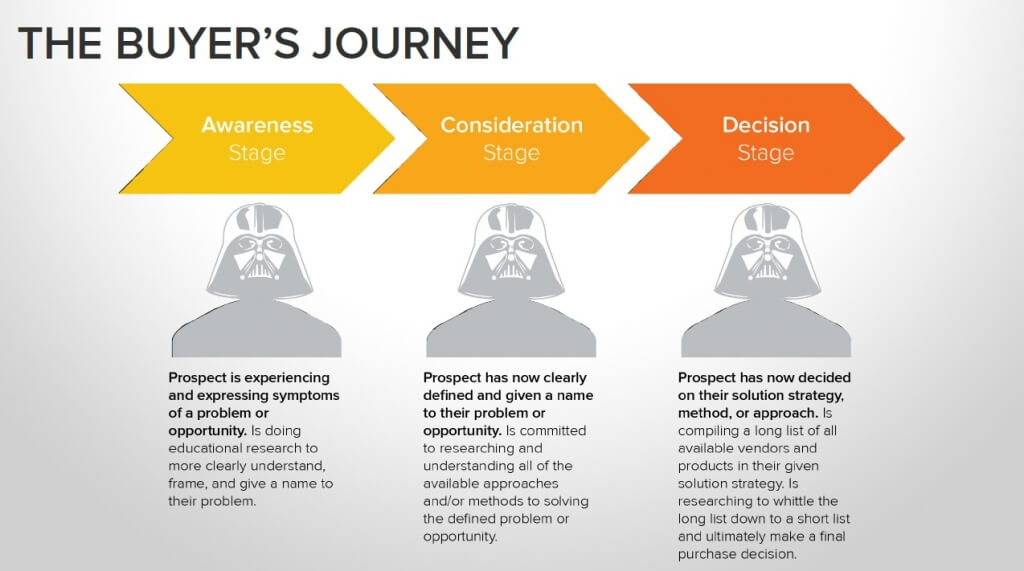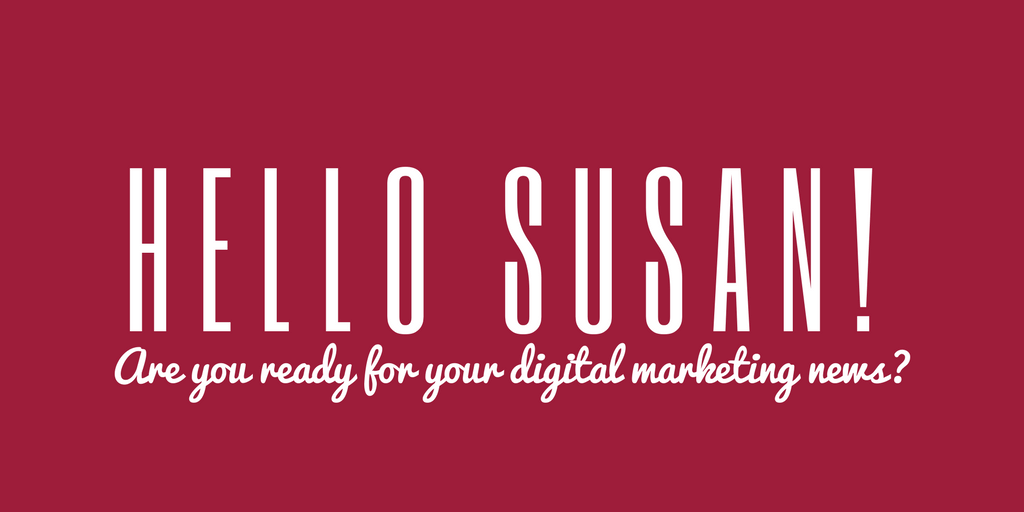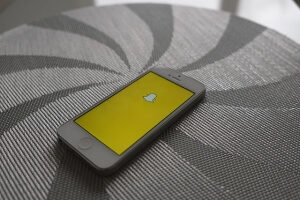Immerse yourself in whispered tales and timeless beats, as the ambiance transports you to a bygone era reserved for top shelf A-listers. An air of intrigue awaits those who dare to discover this hard-to-find haven.
Be captivated.
Seek the unseen.
This is the first in a series of educational and informative posts with tips, tricks, and strategies to help hospitality B2B sales professionals utilize social selling and today’s technology to boost the bottom line.
Your Linkedin profile claims you have been a member since 2005 and have 1,256 connections. Sounds impressive, right?
What does that really mean and so what? Like many sales professionals, do you think it’s all been a waste of time as no real deals have come from this social media platform?
Nothing could be further from the truth if you really understood the power of combining Linkedin with social selling strategies.
It’s time for some straight talk. An un-optimized website could be costing you hundreds of thousands of dollars when it comes to snagging vacationers on the lookout for great accommodations.
People expect big things from the hospitality industry today. With review platforms and large booking sites determining how most people pick their vacation lodgings, hospitality businesses need exemplary websites now more than ever before.
Could your hotel’s website be holding back your ability to maximize revenue?
[vc_row][vc_column width="1/1"][vc_column_text]Our Team consisting of Cory Falter, Michael Duffy and myself recently offered the following content as a presentation at a conference. Want the slides? Let me know!
In a galaxy not so far, far, far away… a brave leader is trying to grow the outpost he and his followers believe so deeply in. But their methods, although historic and heroic, are no match for the new world. All of a sudden, inbound out of the sky, comes a prophet in white – who promises a connection that could grow their outpost beyond their wildest imaginations. But, before he can share his secrets, a test will prove the worthiness of the outposters…[/vc_column_text][/vc_column][/vc_row][vc_row][vc_column width="1/1"][vc_column_text]
Darth Vader is our VIP guest, and we know that we need to learn a little more in order to attract, convert and delight him. Here are some questions (and answers) we’d ask in order to better understand the needs, goals and desires of this targeted potential guest. Let’s get started.
Q: Darth Vader is a semi-fictional character based on a representation of an ideal customer. What is Darth Vader?
A: A Guest Persona
A guest persona is a semi-fictional representation of your ideal customer based on real data about your existing customers and market research. While it helps marketers like you define a target audience, it can also help sales teams qualify leads. When you have a defined set of guest personas, you can then create content to attract them, through blogging, email, and social media channels. Basically, understanding who you are targeting can help you “speak their language” (even if it is dark and disturbing).
So, What is the Guest Persona for Darth Vader, anyway? What are his…
HOMEWORK: How many Guest Personas would your property appeal to? Can you put a personality and name to each? Ex., Engaged Eva, Business Bill. [/vc_column_text][/vc_column][/vc_row][vc_row][vc_column width="1/1"][vc_column_text]Q: Darth has been invited to speak at a conference on the Death Star, and he has decided to turn his business trip into a “bleisure” trip. He knows it’s time to book, but hasn’t decided where to stay just yet. What would a marketer call where he is in his process?
A: Lifecycle Stage or Buyer’s Journey
The stages a prospect goes through from thought to purchase are called Lifestyle Stages and can generally be broken down into three stages: awareness, evaluation, and purchase. What’s important to understand about each of these stages is that not every piece of content you create is appropriate, depending on what stage your audience might fall in at that moment.
Examples of Content Ideas for each phase of Darth Vader’s Buyer’s Journey.
AWARENESS: The buyer realizes they have a problem.
Blog Post – Three Easy Reasons Why the Death Star Will Seamlessly Turn Your Business Trip Into a Bleisure Trip
CONSIDERATION: The buyer defines their problem and researches options to solve it.
Blog Post – Hotel Rooms Vs. Residential Suites – Which Will Best Fit Your Personal Clan of Storm Troopers
DECISION: The buyer chooses a solution.
Video – 10 Reasons Hotel Death Star Appeals to Your Dark Side (Plus an intro offer for you!)
HOMEWORK: Think about the three phases of the Buyer’s Journey. What type of content ideas can you come up with to fit into each bucket? Use this Buyer’s Journey Worksheet as a prompt.
Q: You’ve gathered that Darth has chosen to turn his “bleisure” trip into an opportunity to reconnect with his son and daughter. Your follow-up to provide drip emails that are relevant and timely based on this information is called what?
A: Contextual Marketing
Contextual Marketing is a set of best practices designed to amplify the value of your content to your prospects and customers. More specifically, it’s about using known qualities of your prospect to present your content in a natural, noteworthy and useful frame of reference.
Drip nurturing emails are one of the strongest – and earliest – examples of the strategy’s success.
Here are some examples of contextual follow-up email subject lines that Darth Vader may respond to:
Some additional examples of contextual marketing include triggering an email based on a page visited on your website (an email once the wedding page is visited for example), a Birthday or Anniversary email or an Abandoned Cart email.
RELATED: Stop the Madness: Is Your Hospitality Email Marketing a Complete Waste of Time?[/vc_column_text][/vc_column][/vc_row][vc_row][vc_column width="1/1"][vc_column_text]Q: While staying at the Death Star Hotel with his family, Darth posted a picture of the pool on the social media site, FaceClone. His ‘friends’ commented, liked and shared the post. How does this benefit the brand?
A: Social Proof
Social Proof is the idea that consumers will adapt their behavior according to what other people are doing. In social media, Social Proof can be qualified by the number of interactions a piece of content receives or the number of followers you have. The idea is that if others are sharing something or following someone, it must be good.
Study after study show, consumer are 10x more likely to purchase from a third-party referral.
In addition to sharing their own content (UGC) in relation to a brand through their social media channels, examples of Social Proof also include:
HOMEWORK: Explore ways you can set up opportunities for guests to excitedly share the experiential nature the property. Some examples could be Snapchat filters, Share to Win, or Photo Booths (with logo, shareable directly from the booth to social channels).[/vc_column_text][/vc_column][/vc_row][vc_row][vc_column width="1/1"][vc_column_text]Q: Still a-buzz from his amazing stay at the Death Star Hotel, Darth decides to visit the hotel website for a trip down memory lane. Before he realizes it, he’s spent nearly an hour browsing. His browsing behavior is contributing to what?
A: Lead Score
Lead scoring is a methodology used by sales and marketing departments to determine the worthiness of a potential customer, or lead, by attaching values to them based on their online behavior relating to their interest in products or services.
Scores can be set based on:
HOMEWORK: Determine what score would make a lead sales-ready. Set a point value for each digital engagement and “keep score.”[/vc_column_text][/vc_column][/vc_row][vc_row][vc_column width="1/1"][vc_column_text]
You, our valiant leaders, in your hero’s journey, have gone through this right of passage and embraced the power of the force to connect with even your most challenging guest: Darth Vader, by creating communications and an experience relevant to his needs.
Darth Vader hosted an awesome presentation and was also able to reconnect with Luke and Leia. He chose the Death Star Hotel for eternity for his business and leisure trips….
Remember… DO or DO NOT, there is not try.
Is your independent hotel looking for an out-of-the-box way to connect with guests and make them raving fans? Contact us to learn more about our effective programs for properties just like yours!
Susan Tucker, Director of Digital Strategy
Susan brings her experience and enthusiasm as Director of Digital Strategy. A certified Inbound Marketing professional, she believes consumers should not be “sold to” but that they should find value in brands that are providing the products and services they are seeking. Outside of work, you can find her chasing her boys on the ski slopes or watching them on the sidelines of the soccer field.
Have a pressing digital marketing question for Susan? Contact her here.[/vc_column_text][/vc_column][/vc_row]
As a hospitality brand, you may have noticed that in today’s digital world, it’s harder than ever to catch a prospect’s attention. With information so easily available to anyone searching for it, you may be wondering how you can make your content stand apart. How you can give your prospects what they want and when. Well, we’ve got the answer. Content personalization.
Personalized content is a relatively new method of digital marketing that has proven super effective, for not only grabbing your prospect’s attention but also building a stronger bond. If you’ve ever used Amazon or Netflix, you’ve experienced automated, personalized content. These sites offer you content based on what you’ve purchased or watched before. They use data about you to provide further content based on your taste and past behavior.
What Amazon and Netflix do is just one simple example of personalized content. There is a whole range of options available now for organizations that want to personalize their content.
Personalized content refers to using information you have on your target audience to create content tailored to their interests, preferences, or needs.

In today’s world of information overload, personalization is essential for a number of reasons. First, customer attention is increasingly harder to attract. Today’s customer is constantly bombarded with content, so content creators need to make theirs stand out. Personalization does this by speaking directly to the user’s preferences, problems, and needs.
Personalizing your content allows you to create a stronger bond with your audience. They feel that you know them and you’re speaking directly to them. While everyone follows any number of content outlets online, your audience will read your content first if they feel they have a strong relationship with you.
Content personalization is driven by the data you have about your target market and their needs and behaviors. The more data you have about your audience, the more you can personalize your content to meet their needs. The foundation of your personalization is a clearly identified customer persona.

The first step in personalizing your content is to develop a clear message and goal for each piece of content you produce. If you don’t have a strategic reason for the content in the first place, personalization won’t help you reach your objective. It’s a matter of deciding where each piece fits into your overall strategy.
There are five degrees of personalization that you can consider, and some are easier than others. The five areas are:
Segment Specific. Personalize your content by target market segments. Segments might include industry, particular interests, demographic differences, geographical location, or psychographic factors such as a specific need or problem.
Persona Specific. Personalize content by buyer types. Examples of buyer types include first-time visitors to your website, regular blog readers, prospects who expressed interest in a certain product or service, leads from a specific tradeshow, and so on.
Stage-Specific. Persona specific content is personalized for a type of buyer. The difference with stage-specific is that it identifies a certain step in the buying process. You might create content personalized for a first-time cold prospect, or aim content at a repeat buyer who you know is likely to make a purchase based on an upsell or cross-sell.
Account Specific. You might personalize your content for a particular prospect or organization.
Lead Specific. This type of personalization is for one specific individual.
YOU MAY ALSO ENJOY:What if Darth Vader Was Your VIP Guest?

Tools are often essential for personalizing content. You don’t have to do it all manually. There is a wide range of tools available and they include:
Quiz plugins – When a person visits your website, they’re presented with a short quiz asking about their interests. Based on their answers, it directs them to the content that would be most relevant to their stated interests.
Profiles plugins – Some sites now have a profile option for visitors. They ask the visitor to choose which profile most matches them. These profiles could be something like positions in a company, such as New Hire, Sales Staff, or Management. They choose the profile and then are taken to the most appropriate page.
Email autoresponders – An autoresponder is a program used for email marketing. It allows you to send messages to your subscribers and receive data about them. Autoresponders offer a wide range of personalization options. They can offer specific content based on the actions or preferences of subscribers.
Recommendination plugs – Another example is a WordPress plugin that presents specific posts or products based on where someone lands on your site or which content they consume.
Site visit plugins – Another example would be a plugin that uses the visitor’s name for a personalized message. When they land on the page, it says something like, “Hi, (name), welcome back! Here are the latest posts we think you’d like.”
Once you implement your content personalization strategy, you need to monitor it in order to understand what’s working and what’s not. You can then make any changes necessary and create a stronger personalization plan.
We predict that content personalization will be even more essential in the future. And, no matter if you’re marketing to the B2C segment or the B2B segment, personalization techniques will become increasingly important as people seek more personal experiences online. The more you can make a connection, the better your bottom line!
What You Can Do Today:Content personalization doesn’t have to be creepy. In fact, you probably have already gathered tons of data on your current and potential customers. Get started by segmenting your data into an Excel Workbook. Begin with the obvious differentiators, and add to the information as necessary. Next, determine how you can upgrade your email program to speak specifically to each of those segments. As you build and test your program you’ll be able to refine for even better results!
The demand for consumer attention is at an all-time high. The catch-phrase for this might be “if you can’t stand the heat, stay out of the kitchen.” Rather than “staying out,” let’s find a smarter way to withstand the heat.
You’re likely plagued by two main issues: you, or your team, spends exorbitant amounts of time dealing with routine menial hotel marketing tasks, and needs a more efficient way to send targeted message to various audiences.
Hotel marketing automation is the solution to both of those issues. Because of the constant battle to retain and increase your segment of the market, time is more important than ever. Without the aid of marketing tools it’ll be difficult to keep your head above water. Marketing automation will help you streamline the entire messaging process.
(more…)The original concept of the RFP was created with good intentions. It was originally developed as a standardized process for submitting clear and consistent information between the planner and the property.
The used car salesman lurking in the lot like a rabid great white shark.
Or the fast-talking telemarketer, who tries to release their pitch before you call end button.
Examples of painful experience which most avoid like the plague. Most damaging is the reputation and opportunity to build any meaningful relationship with those prospects.
(more…)Best practices reap best rewards. When it comes to sales, this is exponentially true. Except, for a hotel these days, what are the “best practices” in sales? With the constant evolution of technology and the overwhelming onslaught of tools, it can be challenging to discern what to use, when, where, why, and even how.
We have uncovered a sales technique that both uses best practices and can position you as a superhero. It’s called inbound sales and we are here to tell you more about it.
More often that not so many of our sales tools are founded on the same principle – a vague assumption that the people we’re selling to want our product. We’ve approached prospecting like a numbers game – the more people we can pitch to, the more sales we can close.
That’s a dangerous technique these days, because buyers have an unprecedented amount of control over which messages they do and do not wish to hear. If your hotel sales team is pushing your product(s) on an audience that may not need or want it, then not only will leads not prove fruitful, your prospecting has the potential to completely backfire.[/vc_column_text][/vc_column][/vc_row][vc_row][vc_column width="1/1"][vc_column_text]

Image credit: On Target | by viZZZual.com
What is the solution then? Stop assuming that the more people you can get in front of the higher your close rate. Why? Because now there are highly effective, modern tools available that can help you hyper-target who needs your product, and gives you super powers into how to convert them into a sale. It’s about identifying the right prospects and best understanding how to nurture them into leads and sales.
Pinpointing and attracting these authentic leads is commonly referred to as “inbound marketing,” and the special power to help close the sale is referred to as “inbound sales.”
Though it may be foreign to some hoteliers, the term inbound marketing has been making it’s way through the hospitality industry, becoming a familiar face. Inbound sales, on the other hand, is still the mystery guest at the party and we want to introduce you to this new and exciting concept.
Related: 8 Steps to Sales Nirvana :: How Inbound Marketing Can Supercharge Your Direct Bookings and Lead Generation[/vc_column_text][/vc_column][/vc_row][vc_row][vc_column width="1/1"][vc_column_text]
 Essentially, inbound sales is an acute focus on individual buyers and their frustrations, pain points, needs, and goals. An inbound salesperson prioritizes the buyer’s needs before their own, every.single.time. When you approach the sales cycle from the place of being genuinely helpful, you will automatically be two steps closer than your pushy, non-relevant counterparts. Yet, it takes patience to develop your inbound sales system. Here’s how to get started.
Essentially, inbound sales is an acute focus on individual buyers and their frustrations, pain points, needs, and goals. An inbound salesperson prioritizes the buyer’s needs before their own, every.single.time. When you approach the sales cycle from the place of being genuinely helpful, you will automatically be two steps closer than your pushy, non-relevant counterparts. Yet, it takes patience to develop your inbound sales system. Here’s how to get started.
First answer the why….
Inbound sales is answering the why before anything else. Think of yourself as the sales advisor, instead of the sales person. If you’ve done your inbound marketing homework, you’ll have your buyer personas, you’ll know exactly who your target audience is and what they need, want, and desire. Additionally, you understand the buyer’s journey – you know where your prospects are in the buying cycle and your goal is to provide solutions every step of the way.
Related: Boost Hotel Sales with These Hot Marketing Automation Tips[/vc_column_text][/vc_column][/vc_row][vc_row][vc_column width="1/1"][vc_column_text]All that’s left is to tell your target audience the why behind your product or service, and then guide them to the realization that one of their frustrations, pain points, needs, or goals are alleviated or achieved through your product. They have a problem. You have a solution.
When you implement the inbound sales methodology, it helps your team:
Next, no more cold calls!
No more assumptions. No more cold calls. No more leads gone to waste. Be the hero in the hospitality industry. Serve your guests as best as they can be served because you have already learned so much about them, have an understanding of their needs and how you can best provide a solution.
Inbound sales is your key to solid leads that have been nurtured from the beginning, which will then translate into happy and thankful reviews, which will then evolve into more of your target audience being reached.
Inbound sales is the good kind of domino effect, and who doesn’t need a little of that?
In the ever-changing world of social media there is a driving new force on the street that hoteliers shouldn’t ignore, and that platform is Snapchat. What began as the “picture disappearing app” in the summer of 2011 from three Stanford students, has quickly become one of the most unique forms of story-telling a brand can use. In fact, that funny little yellow ghost icon is captivating millions of people every day, and is showing no signs of stopping.
Should your hotel be utilizing Snapchat? If you’ve been searching for methods to reach the millennials (and the growing demographics beyond), then the answer is yes. From a marketing standpoint, you need to be where the audience is, and the millennials are on Snapchat, watching a whopping eight billion photos and videos a day.

Source: AdamPrzezdziek | Flickr
There are many reasons why a hotel should use Snapchat, here are a few compelling ones:
Deciding whether or not to use Snapchat is the first step. Once you’ve decided to use it, you’re left to determine how to use it well.
Just like the average user, a hotel has the ability to create a profile. After the profile is set up, the hotel can send out “snaps,” add snaps to their stories, and all of the other fun stuff Snapchat does. So ultimately Snapchat works the same for brands as it does everybody else, but how brands should use it is the key to success.
Keep the Snapchat Tone, or Else.
One of the reasons Snapchat users love to use Snapchat is because it’s different than the other channels. It’s more authentic, it’s in the moment, it’s not as edited, not as staged. Snapchat is personal, it’s private, and it’s compelling. Use it to tell your story, show off your city, take your followers on an adventure. Show them a day in the life at your hotel, the luxury they can experience, the sights they can see. If you’ve taken the time and resources to set up a Snapchat account, the last thing you want is to drive away followers by breaking the unspoken Snapchat rules!
Partnering with influences is rapidly becoming a huge part of hotel marketing on all platforms, and it’s no different where Snapchat is concerned. Hotels have an advantage when it comes to Snapchat – travel. Many people love to travel and see new places, this provides you with the perfect opportunity to show off your property and surrounding landscape or city! Send out a proposal to social media influencers inviting them to come stay on the basis that they tell their story on Snapchat. Thousands, or more, individuals – millennials – can see your property through the lens and creativity of the influencer.
One of the most fun and downright useful aspects of Snapchat are its Geofilters. Essentially, you can create your very own Snapchat filter. The filter will pop up with a Snapchatter is within range, and they can use it on their Snap. It’s sort of like a tag or postage stamp – showing their Snapchat friends where they are. Since you’re able to design it, you can use the hotel’s logo or anything else that works in line with your hotel’s brand. Even here there is an opportunity to create a geofilter that stands out – a filter that will “brand” its image in the viewer’s mind. You can also set up a “Geofence” for exact targeting of users, making it simple to engage views with promotional opportunities.
Snapchat is still trendy. It’s still new, exciting, and not yet crowded. Do your hotel a favor by helping it to be trendy and asserting it as welcoming and encouraging of millennials. This is a way to stand out among the crowd. Snapchat also provides an opportunity for your hotel to build strong and long-lasting relationships. Encourage guests to Snap while staying at the property. Build a community around your story, and use Snapchat as the headquarters.